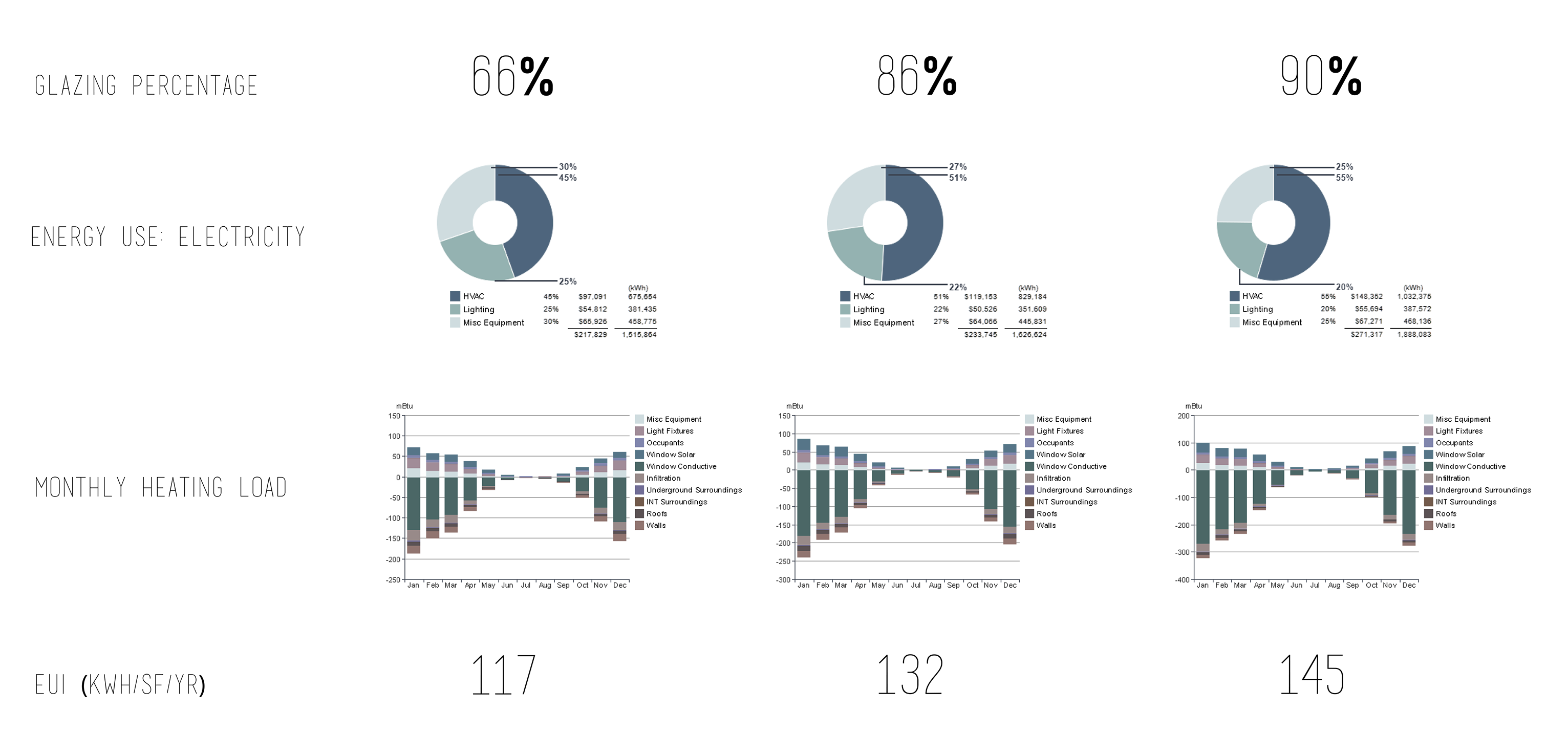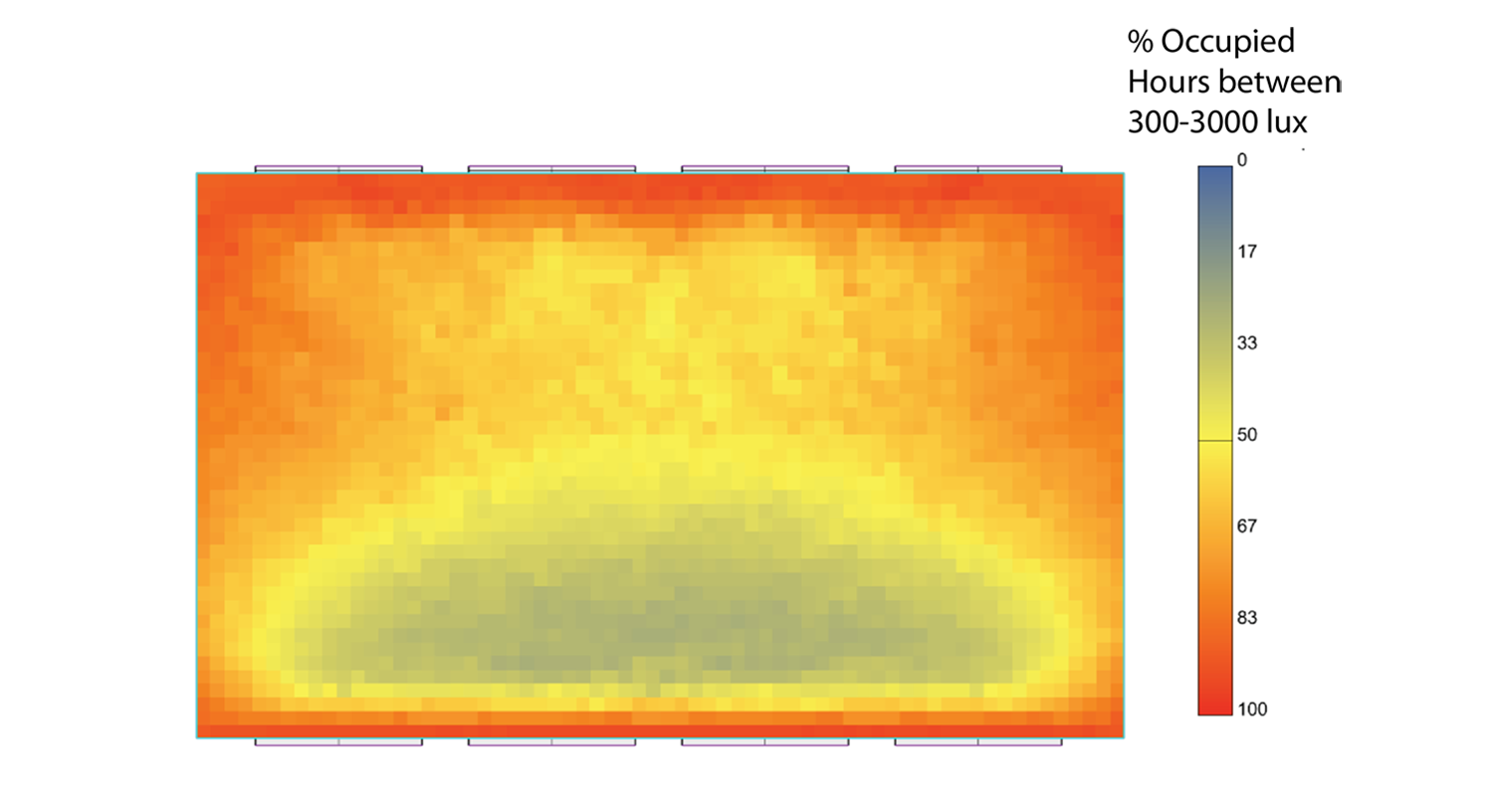Comparison of facade glazing percentage and energy use.
Like many of us in the design and construction industries, we at BUILD have been thinking about how to create more energy efficient buildings, at every stage of the design process. Energy modeling lets us evaluate the success of our design decisions against the project’s energy goals and produce more sustainable buildings.
In 2022, energy use in residential and commercial buildings was responsible for 40% of total energy consumption in the United States. This includes the energy used to heat and cool buildings, to keep airflow at appropriate levels for occupant health, to keep the lights on, and our devices and equipment powered on. For those designing, financing, and constructing buildings, this represents a major opportunity to shape the way that people across the country use energy, and consequently the ways in which our energy consumption influences the environment, the economy, and society.
Energy modeling, like many of the tasks that architects undertake, is an attempt to predict the future. An energy model is a computational representation of all of the important components of a building that will influence its energy consumption: the climate the building is located in, where and how many windows there are, how well-insulated the envelope is, where and how many walls there are, how much energy occupants will be expected to use (is this a rarely-occupied cabin or a hospital that requires high-energy life-saving equipment and a robust ventilation system?), and much more. The more accurate the assumptions that build the energy model are, the more likely the energy simulation will be able to accurately predict the future—although a surprise heat wave or Bitcoin mining operation might still lead to real-world energy use that differs from the prediction.
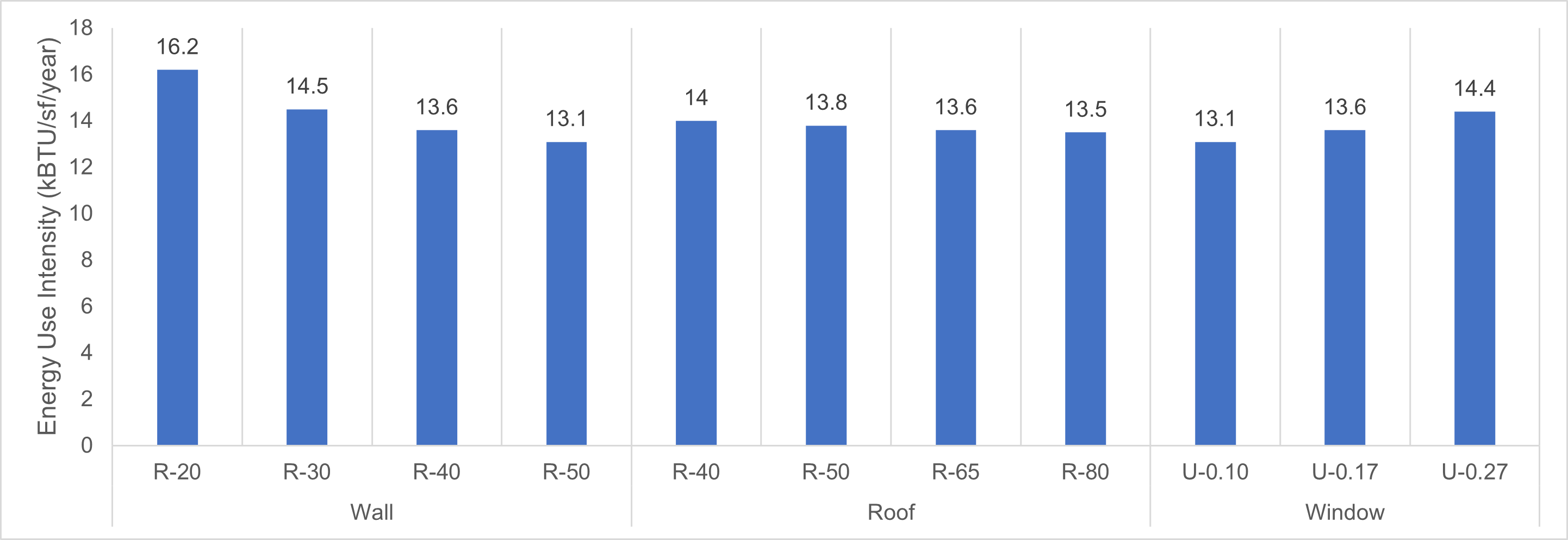 Energy Use Intensity (EUI) from a conceptual energy model comparing different wall, roof, and window insulating values.
Energy Use Intensity (EUI) from a conceptual energy model comparing different wall, roof, and window insulating values.
In many cases, having a perfect energy model that predicts future energy use with 100% accuracy isn’t the primary goal, although it doesn’t hurt. In the early stages of design, using an energy model to compare and quantify the effect of double pane vs. triple pane windows, or an east- vs. west-facing atrium can be much more powerful for informing design decisions. Energy modeling can also be used for life cycle cost analysis, to prove compliance with energy code, or to earn incentives through programs such as the Energy Trust of Oregon.
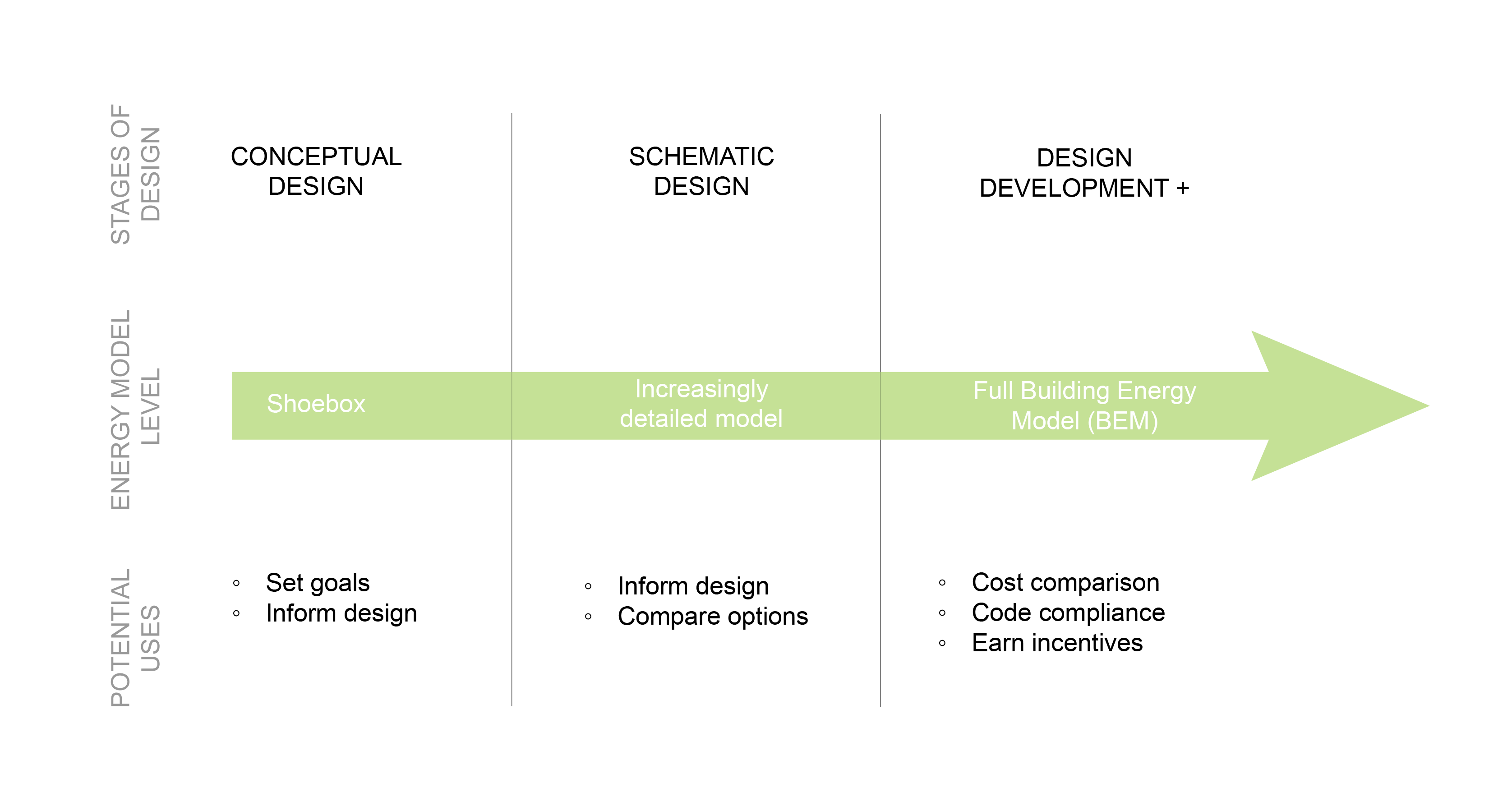 There are different levels of energy models that are more suited to some or all of these uses based on the amount of information they provide and how much time it takes to put them together. Assembling a highly accurate energy model can be time-consuming, and requires highly detailed information about the project that may not have been determined early in the design process. At this stage, a conceptual massing-level energy model, often called a “shoebox model,” is the most helpful. These are quick to put together, as they represent the building with very basic geometry (often similar to the shape of a shoebox) and make assumptions about information relevant to the energy simulation that might not be determined yet, such as assuming generic lighting levels or HVAC for a particular use case. This kind of model wouldn’t be able to prove code compliance or accurately predict future energy use, but it will be very useful for answering questions the design team might have early on in the design process, such as how to orient the building and its windows to minimize energy use, and the scale of effect of increasing the surface area of the envelope, or adjusting its insulating properties.
There are different levels of energy models that are more suited to some or all of these uses based on the amount of information they provide and how much time it takes to put them together. Assembling a highly accurate energy model can be time-consuming, and requires highly detailed information about the project that may not have been determined early in the design process. At this stage, a conceptual massing-level energy model, often called a “shoebox model,” is the most helpful. These are quick to put together, as they represent the building with very basic geometry (often similar to the shape of a shoebox) and make assumptions about information relevant to the energy simulation that might not be determined yet, such as assuming generic lighting levels or HVAC for a particular use case. This kind of model wouldn’t be able to prove code compliance or accurately predict future energy use, but it will be very useful for answering questions the design team might have early on in the design process, such as how to orient the building and its windows to minimize energy use, and the scale of effect of increasing the surface area of the envelope, or adjusting its insulating properties.
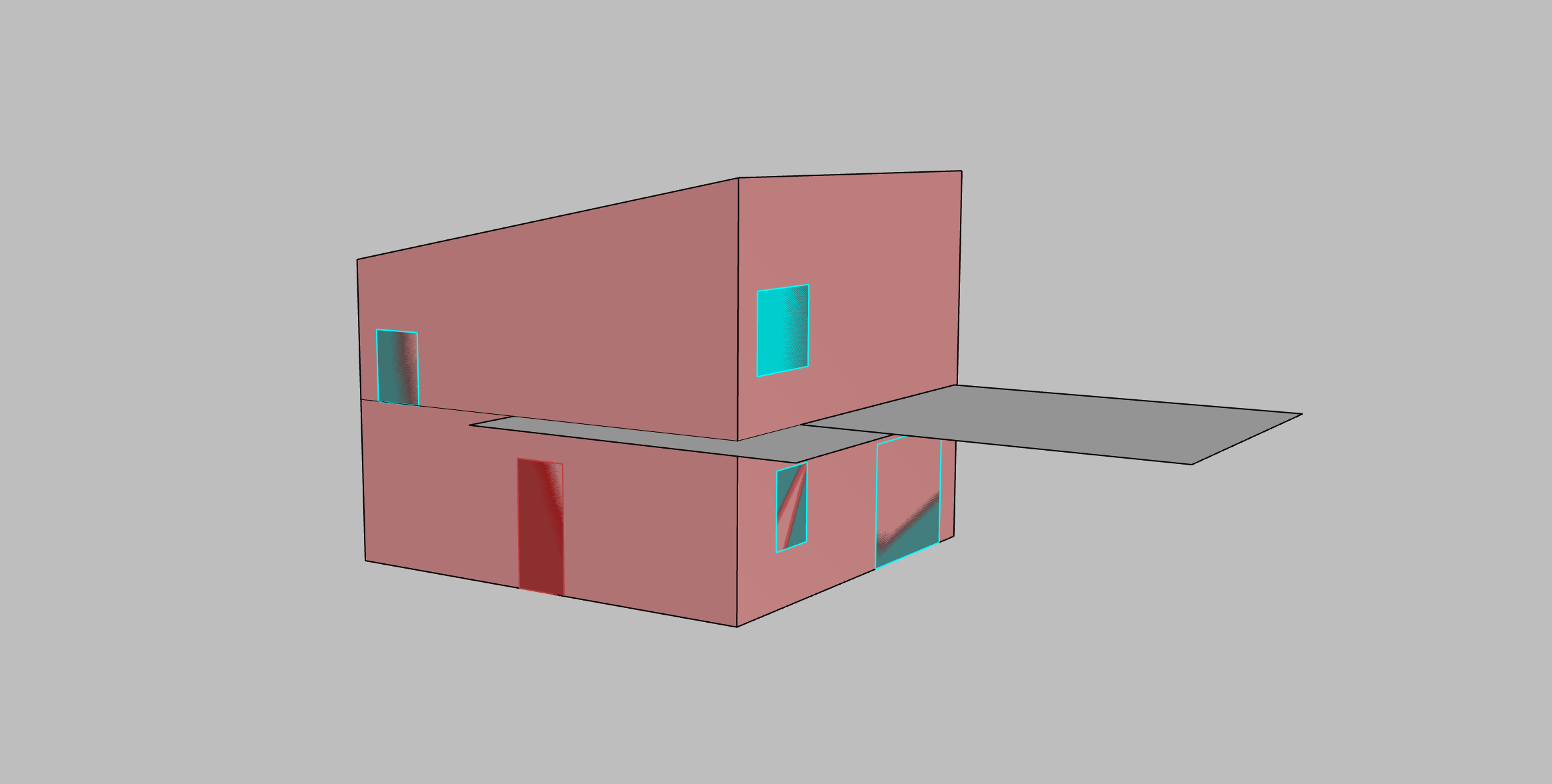 Example of basic geometry in a conceptual energy model.
Example of basic geometry in a conceptual energy model.
A shoebox model can then be refined and filled in with more project-specific details so it can be used for purposes requiring more accuracy. These might include precisely defining the HVAC system, wall and roof assemblies, and window products; fine-tuning the expected plug and lighting loads, and modeling detailed geometry such as shading devices. However, much like the design process as a whole, building an energy model is a continuous and iterative process. A project might start with particular energy goals, which an initial energy model can evaluate the feasibility of. These goals might then be reevaluated and revised, with the energy model continually being adjusted to reflect the current design, and to judge its performance against the overall project goals, feeding information back to the design team. While the upfront work to build a full building energy model can be time-consuming, once the model is built, it’s quick to swap out R-values or tweak the plug loads.
It’s worth mentioning that there are a few cousins of energy modeling that can also harness the power of computing to design high-performance buildings. These include daylight modeling, thermal comfort modeling, Computational Fluid Dynamics (CFD) simulations, embodied carbon analysis, and more. Some energy simulation tools include the capability to analyze some or all of these factors, while others require supplementary software to precisely optimize these areas. Along with energy modeling, these tools allow designers to quantify the effects of their design decisions with respect to energy use, occupant comfort, and environmental impact,and to achieve each project’s building performance goals.
Example of daylighting simulation results for Useful Daylight Illuminance (UDI).
Cheers from Team BUILD!






